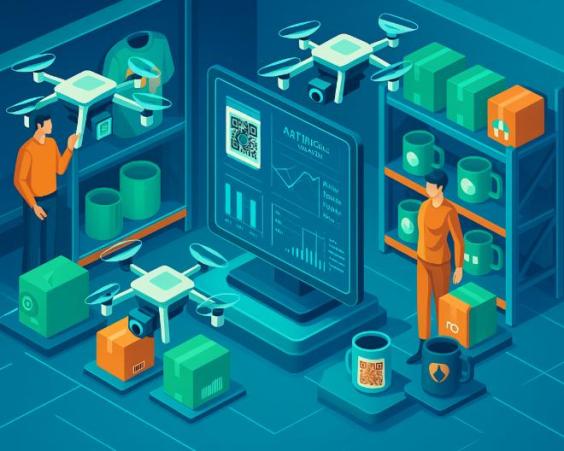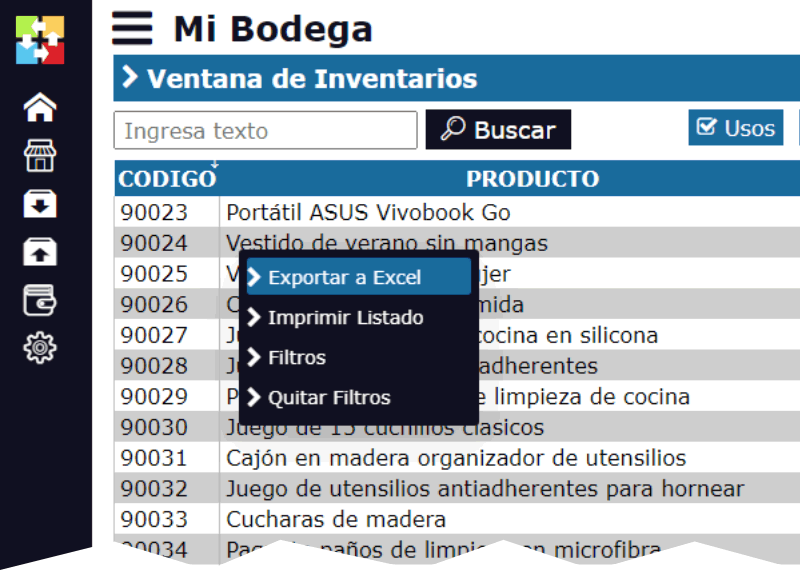Inventory Automation with Drones and Artificial Vision: A Logistic Case Study.
Inventory Automation with Drones and Artificial Vision: A Logistics Case Study
Inventory automation is a crucial process in the logistics industry, as it allows companies to maintain precise and efficient control over their inventory. In this article, we will explore how the combination of drones and artificial vision can revolutionize the way inventories are managed in warehouses and distribution centers.

Introduction
Inventory management is a complex process that requires a significant amount of time and resources. Traditionally, it has been performed using manual methods, such as manual counting of products and updating records on paper or in computer systems. However, these methods can be prone to errors and are not efficient enough to meet the demands of today's economy.
The Solution: Drones and Artificial Vision
The combination of drones and artificial vision offers an innovative and efficient solution for inventory automation. Drones equipped with cameras and sensors can fly over warehouses and distribution centers, capturing images and data in real-time. Artificial vision, on the other hand, allows for the analysis and processing of this data to identify and count products with precision.
Advantages of Inventory Automation with Drones and Artificial Vision
- Greater Accuracy: Artificial vision can detect and count products with an accuracy of 99%, significantly reducing the risk of human error.
- Time and Resource Savings: Inventory automation with drones and artificial vision can reduce the time and resources required to perform inventories, allowing companies to focus on other critical areas of the business.
- Improved Efficiency: The ability of drones to fly over warehouses and distribution centers allows for wider and faster coverage, reducing inventory cycle time.
- Cost Reduction: Inventory automation with drones and artificial vision can reduce the costs associated with inventory management, such as labor and equipment.
Case Study: Implementation of Drones and Artificial Vision in a Logistics Warehouse
A leading logistics company decided to implement an inventory automation solution with drones and artificial vision in one of its warehouses. The goal was to improve the accuracy and efficiency of inventory management, as well as reduce the costs associated with this process.
The implementation of the solution consisted of the following steps:
- Equipment Selection: Drones equipped with high-resolution cameras and sensors were selected to capture images and data in real-time.
- Artificial Vision Configuration: Artificial vision software was configured to analyze and process the data captured by the drones.
- Integration with the Inventory Management System: The solution was integrated with the existing inventory management system to ensure accurate and real-time updating of inventory records.
After implementation, the company achieved an accuracy of 99% in inventory management, significantly reducing the risk of human error. Additionally, a 30% savings in time and resources was achieved, allowing the company to focus on other critical areas of the business.
Conclusion
Inventory automation with drones and artificial vision is an innovative and efficient solution that can revolutionize the way inventories are managed in warehouses and distribution centers. Accuracy, time and resource savings, and improved efficiency are just some of the advantages offered by this technology. It is essential that logistics companies consider implementing this solution to improve their competitiveness and meet the demands of today's economy.





